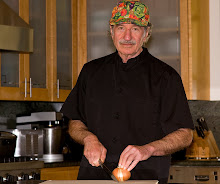Whenever we are dining at one of our favorite neighborhood Chinese restaurants, I am always intrigued by the ordering styles of many of the patrons. Diana and I have coined this process the Wide World of Animals school of menu selection.
Over the years, we have culled the best vegan items on the menu, which generally total around five or six dishes. We generally choose two or three items from this group, which makes ordering for us fairly straight forward.
For those other folks, especially if there are more than two people in the group, there seems to be manifest desire to include a different species of animal for each dish selected. In real world terms, the ordering, with some variation, goes something like this: Sweet and sour pig, chicken with black bean sauce, Mongolian cow and some type of scrimp or fish dish. If vegetables are selected, they will invariably be partnered with an additional animal source. Rice becomes optional, usually white.
The scenario I have described, is occurring in Berkeley, the so called gourmet ghetto of Northern California.
Monday, May 24, 2010
Monday, May 10, 2010
A Special Brew
In the rarified gourmet world of truffles and aged balsamic vinegar, we have a new interloper in town. The New York Time’s headline of ‘’From Dung to Brew’’ is our entrée to the newest and most bizarre caffeinated beverage to reach our shore.
The prized civet beans come from Southeast Asia, principally from the Philippines and Indonesia. What makes the beans so unique is that they are harvested from the droppings of the civet, after they have been fermenting in their stomach.
A civet is a cat- like animal, indigenous to the region, which has a great fondness for the ripest coffee cherries. The animals digestive enzymes are said to produce a brew that is both smooth and chocolaty, which is highly prized in Japan and South Korea. The beans, selling for up to several hundred dollars a pound, have led to an attempt to bypass the serendipitous nature of this activity, to one that commercializes the processes
Civets are being captured and housed in mini farms to handle the increased demand from the world’s gourmands. From the civet’s perspective, it’s either being hunted for its chicken like flesh or living in cages and being force fed to increase its volume of poop.
This is a classic definition of a dilemma; having to choose between two poor choices. Unfortunately, the poor civet doesn’t have the opportunity to choose between taking it's chances in the wild, versus confinement and enforced gluttony. Talk about animal exploitation.
The prized civet beans come from Southeast Asia, principally from the Philippines and Indonesia. What makes the beans so unique is that they are harvested from the droppings of the civet, after they have been fermenting in their stomach.
A civet is a cat- like animal, indigenous to the region, which has a great fondness for the ripest coffee cherries. The animals digestive enzymes are said to produce a brew that is both smooth and chocolaty, which is highly prized in Japan and South Korea. The beans, selling for up to several hundred dollars a pound, have led to an attempt to bypass the serendipitous nature of this activity, to one that commercializes the processes
Civets are being captured and housed in mini farms to handle the increased demand from the world’s gourmands. From the civet’s perspective, it’s either being hunted for its chicken like flesh or living in cages and being force fed to increase its volume of poop.
This is a classic definition of a dilemma; having to choose between two poor choices. Unfortunately, the poor civet doesn’t have the opportunity to choose between taking it's chances in the wild, versus confinement and enforced gluttony. Talk about animal exploitation.
Subscribe to:
Comments (Atom)

